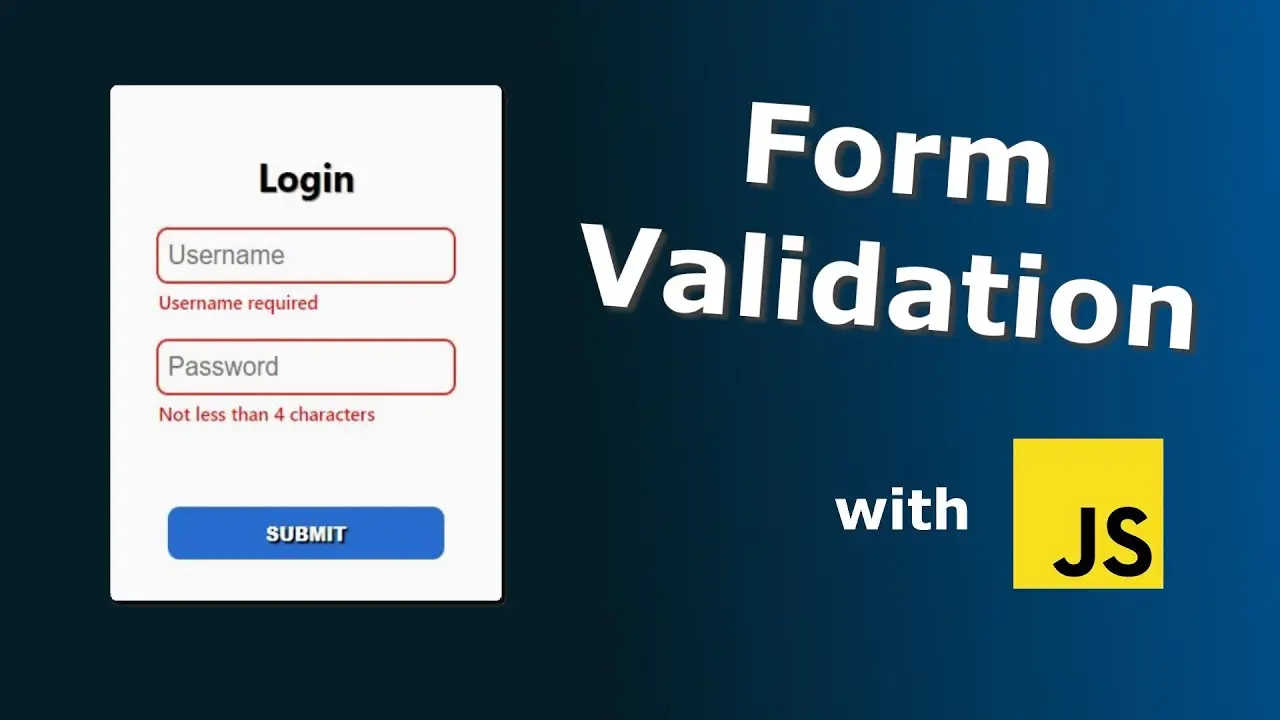General Overview on How to Validate Form data with JavaScript
JavaScript form validation involves the process of checking and validating the data entered into a form before it is submitted to the server with the use of JavaScript. This method helps ensure that the data is accurate, complete, and meets the specified criteria. Furthermore, learning How to Validate Form data with JavaScript, we should also note that JavaScript form validation can be archived by using event listeners to capture form submissions, and then checking the input fields to ensure they meet the required criteria. This can be done by checking for empty fields, validating email addresses, enforcing password strength, and more.
The form validation process typically involves using pure JavaScript to handle form events, access form elements, and perform checks on the input data. This can be done using various methods and functions provided by JavaScript, such as the regular expressions for pattern matching, conditional statements for checking input values, and displaying error messages to the user when validation fails.
Furthermore, JavaScript form validation is a very important part of web development, as it helps improve the user experience by preventing invalid data from being submitted and processed by the server. Also, It also helps maintain data integrity and security.
How to Validate Form data with JavaScript?
JavaScript form validation code has very simple syntax which are easy to understand. Create a file in your text editor and save it as *index.html* and copy and paste the below code it.
<!DOCTYPE html>
<html>
<head>
<title>Form Validation</title>
<script>
function validateForm() {
var username = document.forms[“myForm”][fname”].value;
var email = document.forms[“myForm”][“email”].value;
if (fname == “”) {
alert(“First name must be filled out”);
return false;
}
if (email == “”) {
alert(“Email must be filled out”);
return false;
}
}
</script>
</head>
<body>
<h2>HTML Form Validation</h2>
<form name=”myForm” action=”indext.html” method=”post” onsubmit=”return validateForm()”>
<label for=”username”>First name:</label>
<input type=”text” id=”fname” name=”fname”>
<br><br>
<label for=”email”>Email:</label>
<input type=”email” id=”email” name=”email”>
<br><br>
<input type=”submit” value=”Submit”>
</form>
</body>
</html>
Explanation of codes
In the example above on How to Validate Form data with JavaScript, a JavaScript function “validateForm” is used to validate the form fields. The function checks if the fname and email fields are empty, and displays an alert if they are.
What are the Benefits of JS Form Validation over PHP and HTML?
JavaScript form validation offers several advantages over the popular PHP and HTML form validation. Here are some key benefits of using JavaScript:
- Client-side Validation: JavaScript form validation allows for real-time validation of user input before it is submitted to the server. This provides immediate response to users, enhancing the user experience and reducing the chances of submitting invalid data.
- Reduced Server Load: Also by performing validation on the client-side, JavaScript reduces the load on the server. This aspect is very beneficial for websites with high traffic, as it minimizes the number of requests sent to the server.
- Improved Security: JavaScript form validation can also help protect against malicious attacks such as cross-site scripting (XSS) and SQL injection. This is archive by validating user input on the client-side, it adds an extra layer of security before data reaches the server.
- Enhanced User Experience: Furthermore, JavaScript form validation also provides a better user experience by preventing users from submitting forms with errors. This reduces frustration and improves the overall usability of the website.
- Cross-Platform Compatibility: JavaScript is supported by all major browsers, making JS form validation compatible with a wide range of devices and platforms.
- Flexibility and Customization: JavaScript form validation allows for greater flexibility and customization compared to PHP and HTML. Web developers can easily create custom validation rules and error messages to meet specific requirements.
Generally, JavaScript form validation offers several advantages over PHP and HTML, including client-side validation, reduced server load, improved security, enhanced user experience, cross-platform compatibility, and flexibility.
Other Related Topics
How To Validate Form Data with HTML Before Submitting to the Database
How To Validate Form Data with PHP Before Submitting to the Database
How To Send Emails Directly from a form with PHP mail Function


Leave a Reply